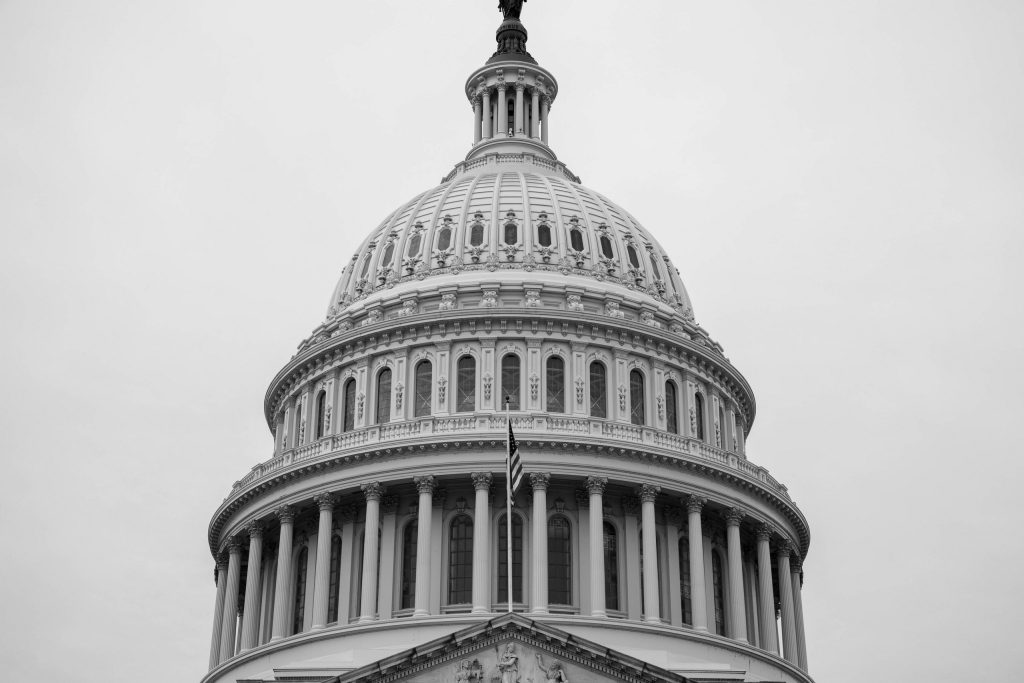Supply Chain Resilience Council: An Overview of Strategic Initiatives

The Supply Chain Resilience Council represents a significant governmental effort towards enhancing economic stability.
In response to the highlighted vulnerabilities in supply chains, the establishment of the Supply Chain Resilience Council by President Joe Biden represents a significant governmental effort towards enhancing economic stability and resilience. This cabinet-level council, which held its inaugural meeting late last year, is part of a broader federal initiative aimed at improving the resilience of the United States’ supply chains against a backdrop of global disruptions and challenges. For more on the administration’s initiatives, explore this page.
Objective Behind Focusing on Supply Chain Resilience

Supply chain resilience is identified as a critical area of focus to support economic growth and stability.
The importance of resilient supply chains has been dramatically underscored in recent years, with disruptions affecting everything from consumer goods to essential medicines. These challenges have highlighted the interconnected nature of global supply chains and the potential for widespread impact from localized disruptions. The Biden administration has identified supply chain resilience as a critical area of focus, with the goal of reducing disruptions, supporting economic growth, and ensuring the continuous flow of goods and services essential for the well-being of American citizens and the economy at large. Discover more about economic impacts here.
A Coordinated Federal Response
The Supply Chain Resilience Council unites a diverse range of federal officials, including the national security advisor and the national economic advisor, under a common goal: to address and mitigate supply chain challenges through a unified and strategic approach. This effort aims to align industrial policy and supply chain strategies across various sectors, fostering collaboration among different government agencies and departments to create a more resilient supply infrastructure. For insights into government intervention, follow this link.
Principal Actions and Measures

A unified approach by the council aims to address supply chain challenges through strategic coordination
Enjoying our insights?
Subscribe to our newsletter to keep up with the latest industry trends and developments.
Stay InformedThe administration has introduced a comprehensive suite of nearly 30 measures to strengthen supply chains, encompassing significant funding announcements, the initiation of data and trade initiatives, and the creation of new governmental offices. These measures also involve the expansion of authority under existing laws, such as the Defense Production Act, to bolster domestic manufacturing capabilities and reduce the United States’ dependence on unpredictable global supply chains. These actions are designed not only to address immediate supply chain vulnerabilities but also to lay the groundwork for long-term resilience and sustainability. Stay updated on supply chain initiatives here.
Implications for Freight, Trucking, and Manufacturing Sectors
The council’s initiatives have significant implications for the freight, trucking, and manufacturing sectors, signaling a strategic shift towards more integrated and resilient supply chain management practices. The formation of a new office for multimodal policy by the Department of Transportation aims to enhance the coordination of national and state-level freight strategies, improving the efficiency of goods movement across transportation modes. For a deeper understanding of how multimodal transportation strategies are enhancing supply chain resilience, explore this page.
Additionally, the Department of Energy’s investments in clean energy sectors reflect a broader commitment to sustainable economic development and the diversification of energy sources, which is critical for reducing vulnerability to global energy market fluctuations. For more on clean energy initiatives, explore this page.
Contributions to National Security and Economic Stability

Nearly 30 measures have been introduced to strengthen supply chains, aiming for long-term resilience.
The establishment of the Supply Chain Disruptions Task Force and the Supply Chain Resilience Council represents a proactive approach to untangling supply chain knots and normalizing the flow of goods. These initiatives are not only aimed at reducing inflationary pressures but also at bolstering sectors deemed critical to national security, such as semiconductor manufacturing. The strategic importance of semiconductors, as well as other critical materials and technologies, underscores the national security implications of supply chain resilience, highlighting the need for a robust domestic manufacturing base and reduced reliance on foreign sources. Click here for more on semiconductors.
“The establishment of the council and related initiatives represent steps towards addressing supply chain challenges and enhancing economic stability.”
Future Directions for Supply Chain Resilience

The creation of a new office for multimodal policy marks a significant effort to optimize the U.S. transportation network.
Looking ahead, the Supply Chain Resilience Council is focused on reinforcing the economic foundation of the U.S. through strategic coordination and targeted investments. The council’s ongoing efforts are intended to maintain supply chain resilience as a key aspect of national economic policy, ensuring a stable and prosperous future. This includes exploring new technologies and practices that can enhance supply chain visibility, agility, and responsiveness, as well as engaging with international partners to foster global supply chain cooperation and stability. For insights into the future of supply chain management, follow this link.
Legislation and Policy in Support of Supply Chain Objectives
The council’s objectives are supported by a range of legislative actions, with Congress passing laws that include supply chain provisions aimed at supporting industries critical to national security and economic well-being. These legislative measures provide a structured approach to addressing supply chain vulnerabilities, emphasizing the role of government in fostering a secure and resilient supply chain ecosystem. Stay informed on legislative developments at this page.
Strengthening Domestic Manufacturing

Strategic shifts towards integrated supply chain management practices signal a commitment to resilience.
A central strategy of the council involves increasing domestic manufacturing capabilities, especially in sectors like clean energy and semiconductors, which are vital for economic and national security. Through initiatives like the expansion of the Defense Production Act, the aim is to enhance national self-sufficiency, reduce reliance on international supply chains, and improve the resilience of critical industries against global disruptions. Discover more about domestic manufacturing efforts here.
Impact on American Society
The initiatives of the Supply Chain Resilience Council are expected to have a broad impact on American society, contributing to the economic empowerment and well-being of families, workers, and businesses. By addressing supply chain inefficiencies and vulnerabilities, the council aims to ensure a more stable and affordable supply of goods and services, supporting the financial health and prosperity of the American public.
Addressing Supply Chain Challenges Holistically

Investments in clean energy and semiconductor manufacturing underscore a commitment to reducing dependency on foreign supply chains.
The council represents a holistic approach to managing supply chain issues, coordinating efforts across the federal government and focusing on both immediate and strategic long-term solutions. This comprehensive strategy is crucial for ensuring the economic stability and growth of the nation, addressing both current challenges and preparing for future disruptions.
Conclusion: The Path Forward for Supply Chain Resilience
As the Supply Chain Resilience Council progresses, its initiatives are expected to play a significant role in shaping the future of the U.S. economy. By emphasizing supply chain resilience, the administration seeks to create a more secure and robust economic environment, capable of withstanding today’s challenges and those of the future.
The council’s comprehensive approach is crucial for ensuring economic stability and addressing both current challenges and future disruptions.
The formation of the Supply Chain Resilience Council is a strategic response to the complex challenges facing the U.S. supply chains. Its continued efforts are anticipated to contribute significantly to the stability and prosperity of the American economy, ensuring that the United States remains at the forefront of global economic resilience and competitiveness.
Recent Developments and the Council’s Evolving Role
- The Launch of the Supply Chain Resilience Center (SCRC): This initiative represents a significant step in operationalizing the council’s objectives. The SCRC is designed to enhance collaboration between the U.S. government and the private sector, focusing on securing and strengthening supply chains across critical sectors. Its establishment aims to enhance the nation’s ability to swiftly respond to and recover from supply chain disruptions, thereby ensuring the continuous flow of essential goods and services.
- Strategic Investments in Clean Energy and Semiconductor Manufacturing: These investments underscore the administration’s commitment to reducing the U.S.’s dependency on foreign supply chains and addressing both environmental and economic security concerns. By focusing on domestic production of critical minerals, grid-scale batteries, and semiconductors, the council is taking steps to secure the supply chains of the future, ensuring that the U.S. remains competitive in key technological and energy sectors.
- Enhanced Multimodal Freight Policy Coordination: The establishment of a new office for multimodal policy is a strategic move towards optimizing the efficiency of the U.S. transportation network. This initiative is crucial for improving the movement of goods across different transportation modes, thereby reducing bottlenecks and enhancing the overall resilience of the supply chain. It reflects a comprehensive approach to national and state-level freight strategy, aiming to support the efficient and reliable delivery of goods nationwide.
- Broadening the Defense Production Act’s Scope: Expanding the authority under the Defense Production Act to include the Department of Health and Human Services represents a strategic expansion of federal capabilities. This move aims to boost domestic production of essential medicines and medical supplies, addressing vulnerabilities in healthcare supply chains. It signifies the council’s holistic approach to securing supply chains across various sectors, ensuring that the U.S. is prepared to meet both current and future health-related challenges.
These initiatives, among others, highlight the Biden administration’s proactive and strategic approach to building a resilient supply chain infrastructure. By addressing immediate challenges and laying the groundwork for long-term resilience, the Supply Chain Resilience Council is pivotal in ensuring the U.S. economy’s stability and growth in the face of global uncertainties.

Legislative support for the council’s objectives highlights the importance of a unified government response.
Five Strategic Actions by the Supply Chain Resilience Council
To encapsulate the strategic initiatives and forward momentum of the Supply Chain Resilience Council, here are five key actions that highlight the council’s comprehensive approach to enhancing the United States’ supply chain resilience and economic security:
- Establishment of the SCRC: This move enhances collaboration between the government and the private sector, aiming to secure and strengthen critical supply chains. It represents a foundational step towards a more coordinated and resilient supply chain ecosystem.
- Investment in Key Manufacturing Sectors: By targeting investments in clean energy and semiconductor manufacturing, the council is working to bolster domestic production capabilities. These efforts are crucial for reducing reliance on foreign supply chains and advancing the U.S.’s economic and environmental security.
- Introduction of a Multimodal Policy Office: The creation of a dedicated office to coordinate freight strategies marks a significant effort to optimize the efficiency of goods movement across transportation modes. This initiative supports the broader goal of enhancing the resilience and reliability of the U.S. supply chain.
- Expansion of Domestic Production Capabilities: Through the broadening of the Defense Production Act’s authority and other legislative measures, the council aims to increase domestic production of essential goods. This strategy is designed to address vulnerabilities in healthcare and other critical supply chains, improving the nation’s self-reliance and security.
- Legislative Support for Supply Chain Resilience: The enactment of laws incorporating supply chain provisions demonstrates the importance of a unified government response to supply chain challenges. These legislative actions provide the legal and regulatory framework necessary to support the council’s objectives and enhance the resilience of critical industries.
These strategic actions reflect a commitment to strengthening the U.S. supply chain infrastructure, positioning the economy to face current and future challenges effectively. Through these initiatives, the Supply Chain Resilience Council aims to create a more secure, robust, and resilient supply chain ecosystem, contributing to the long-term stability and prosperity of the American economy.
Explore External Resources and Insights
- FACT SHEET: President Biden Announces New Actions to Strengthen America: Gain insights into the new actions unveiled by President Biden to fortify America’s supply chains. Visit the White House’s announcement.
- Biden-Harris Administration Announces Supply Chain Resilience Center: Discover the unveiling of the Supply Chain Resilience Center (SCRC) aimed at securing supply chains. Read more on DHS’s announcement.
- Readout of the Inaugural Meeting of the White House Council on Supply Chain Resilience: Learn about the outcomes and discussions from the inaugural meeting of the White House Council on Supply Chain Resilience. Follow this link for details.
- Biden-Harris Administration Highlights Commerce Actions at Launch of White House Council on Supply Chain Resilience: Understand the Commerce Department’s role and actions in conjunction with the launch of the council. Explore the Commerce Department’s press release.
- Report Card: Two Years of Building Stronger Supply Chains and a More Resilient Economy: Review the Biden-Harris Administration’s efforts in enhancing supply chain resilience and economic stability. Check out the White House’s report.




















